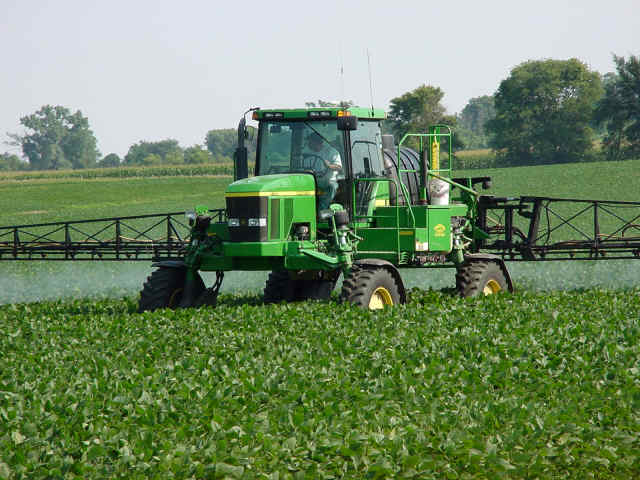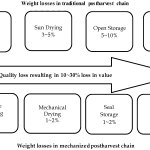Are you tired of seeing uneven results from your pesticide applications? Maybe you’ve noticed some areas in your garden or farm are thriving, while others seem to struggle.
This could be due to improper calibration of your sprayer. Understanding how to calibrate your sprayer is crucial for ensuring that pesticides are applied accurately and efficiently, saving you time, money, and effort. Imagine having complete control over how much pesticide reaches each plant, ensuring they all receive the care they need.
With the right calibration, you can achieve just that. It’s not just about getting the job done; it’s about getting it done right. Keep reading to discover the simple steps to calibrate your sprayer, and unlock the secret to healthier, more consistent crops.
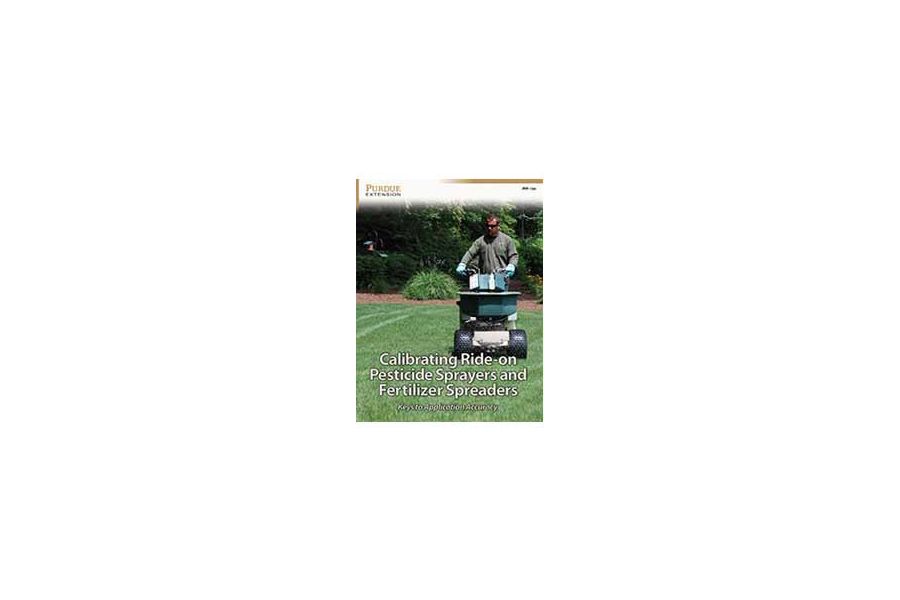
Choosing The Right Equipment
Choosing the right equipment is crucial for accurate pesticide application. The proper sprayer can make all the difference in results. It ensures pesticides are delivered evenly and effectively. This section will guide you in selecting the ideal equipment for your needs.
Understanding Different Sprayer Types
Various sprayers serve different purposes. Backpack sprayers are ideal for small areas. They offer precision and control. Boom sprayers suit larger fields, providing wide coverage. Each type has unique advantages for specific tasks.
Consider The Nozzle Options
Nozzles determine spray pattern and flow rate. Flat fan nozzles offer even distribution. Cone nozzles create a circular pattern, good for spot treatments. Select nozzles based on the pesticide and area size.
Assess Pressure And Flow Rate
Pressure affects droplet size and coverage. High pressure delivers fine droplets, covering more area. Flow rate influences the amount of pesticide applied. Choose equipment with adjustable settings for flexibility.
Evaluate Durability And Maintenance
Durable sprayers withstand frequent use. Stainless steel parts resist corrosion. Easy maintenance ensures longevity. Consider sprayers with replaceable parts for convenience.
Check Compatibility With Pesticides
Ensure sprayers are compatible with the pesticides used. Some chemicals may react with certain materials. Read manufacturer guidelines for compatibility. This prevents damage and ensures efficiency.
Preparing The Sprayer
Calibrating sprayers is essential for accurate pesticide application. Proper preparation ensures efficiency and safety. Before calibration, take time to prepare your sprayer correctly. This step helps avoid uneven pesticide distribution.
Check For Damage
Inspect the sprayer for any visible damage. Look for cracks in the tank. Ensure hoses are not leaking. Damaged parts can affect the spray pattern.
Clean The Sprayer
Clean the sprayer thoroughly. Remove any residue from previous use. Use water and a mild detergent. Rinse all parts well to prevent contamination.
Fill The Tank With Water
Start with filling the tank with water. Use clean water only. Avoid using pesticides during the first calibration. This saves costs if errors occur.
Check Nozzles
Inspect all nozzles for clogs. Ensure each nozzle sprays evenly. Replace any clogged or damaged nozzles. Proper nozzle function is key for even application.
Test The Pressure
Set the sprayer to the recommended pressure. Test the pressure gauge for accuracy. Incorrect pressure affects spray distribution. Adjust until the pressure is correct.
Measuring Output
Calibrating sprayers ensures precise pesticide use, protecting crops and the environment. Measure output by spraying a known area and collecting the liquid. Adjust the sprayer settings based on these measurements for accurate application and cost efficiency.
Calibrating sprayers for accurate pesticide use is crucial for effective pest control. One essential step in this process is measuring the output of your sprayer. This ensures you’re applying the right amount of pesticide to your crops or garden. Getting the measurement right can save you money and prevent harm to the environment. But how do you go about this? Let’s dive into the details.Understanding The Importance Of Output Measurement
Measuring the output of your sprayer is vital for precision. This helps you determine how much liquid is being applied per area. Accurate measurement prevents over or under-application, both of which can have negative consequences. Think about it: applying too much pesticide can damage plants and waste resources. Too little might not effectively control pests. By understanding your sprayer’s output, you can strike the right balance.Gathering Necessary Tools
Before you start, gather the necessary tools. You’ll need a measuring jug or container, a stopwatch, and a flat surface. Make sure your sprayer is in good working condition. Having the right tools on hand makes the process smoother. It ensures that your measurements are accurate. Your tools are your allies in achieving precision.Conducting A Test Run
Begin by conducting a test run. Fill your sprayer with water, not pesticide, for safety. Spray a designated area for a set time, such as one minute. Collect the water in your measuring container. This gives you a baseline for how much liquid your sprayer delivers. Adjust your walking speed or nozzle settings if necessary.Calculating The Output
With your measured quantity, calculate the sprayer output. Use the formula: Output (liters per minute) = Collected liquid (liters) / Time (minutes). Apply this output rate to the area you plan to treat. This ensures you’re applying the correct volume of pesticide. Precision here means effective pest control and environmental safety.Adjusting For Different Conditions
Consider different conditions that might affect your output. Terrain, wind, and temperature can alter spray patterns. Adjust your sprayer settings accordingly. Your surroundings play a role in pesticide application. Being aware of them can enhance your application accuracy. Do you know how each condition impacts your spray?Regular Calibration Checks
Make it a habit to check your sprayer’s calibration regularly. This maintains accuracy over time. Components can wear out, altering your sprayer’s performance. Regular checks ensure consistent application rates. It keeps your pest control efforts effective and safe. How often do you check your equipment? By accurately measuring your sprayer’s output, you ensure that you’re using pesticides effectively and responsibly. This attention to detail can make a significant difference in your gardening or farming success. Have you ever tried measuring your sprayer’s output? How did it impact your application results?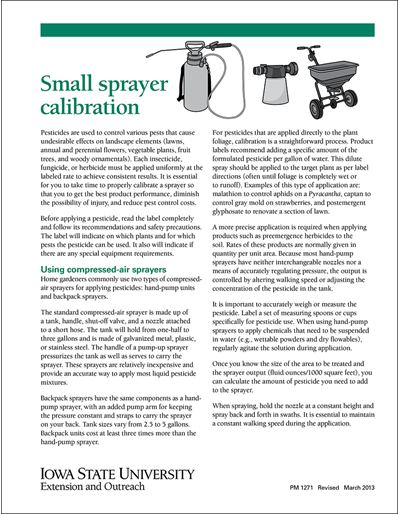
Adjusting For Precision
Adjusting your sprayer for precision ensures effective pesticide use. Proper calibration minimizes waste and reduces environmental impact. Achieving precision involves understanding and controlling several factors. These include nozzle selection, pressure settings, and spray speed. Precise adjustments lead to better pest control and healthier crops.
Choosing The Right Nozzle
Different nozzles produce different spray patterns. Some create fine mist, others deliver coarse droplets. Choose based on the target area and pesticide type. A fine mist covers large areas quickly. Coarse droplets are better for specific targets. Always check manufacturer recommendations.
Setting The Correct Pressure
Pressure affects droplet size and spray reach. High pressure creates fine droplets. These can drift away in the wind. Lower pressure results in larger droplets. These are less likely to drift. Adjust pressure to match your nozzle choice and conditions.
Controlling Spray Speed
Speed influences coverage and application rate. Spraying too fast leads to uneven coverage. Spraying too slow can waste time and resources. Maintain a consistent speed for uniform application. Use a speedometer or GPS for accuracy.
Measuring Spray Output
Regularly check the sprayer’s output. Measure how much liquid it dispenses over time. Use a graduated container for precision. Compare the output with your target rate. Adjust settings if needed to align with desired application rates.
Testing And Recalibrating
Perform test runs in a controlled area. Observe the coverage and effect. Use water instead of pesticides during tests. Adjust based on test results. Regular recalibration is crucial. It ensures consistent performance over time.
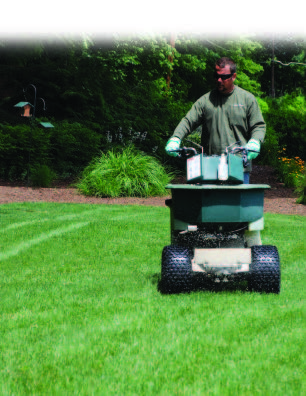
Conclusion
Calibrating sprayers ensures safe and effective pesticide use. Precise application reduces waste and protects crops. Follow the steps carefully for best results. Regular maintenance of sprayers is crucial too. Clean nozzles and check for leaks often. This prevents problems and ensures accuracy.
Accurate pesticide use is better for the environment. It also saves money and promotes healthy plants. Always wear protective gear during calibration and spraying. Stay informed about safe practices. Your crops and the environment will thank you. Happy spraying!

